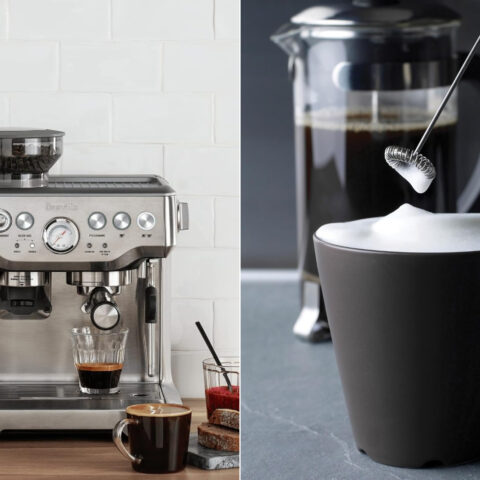Healthy Cleaning Hacks
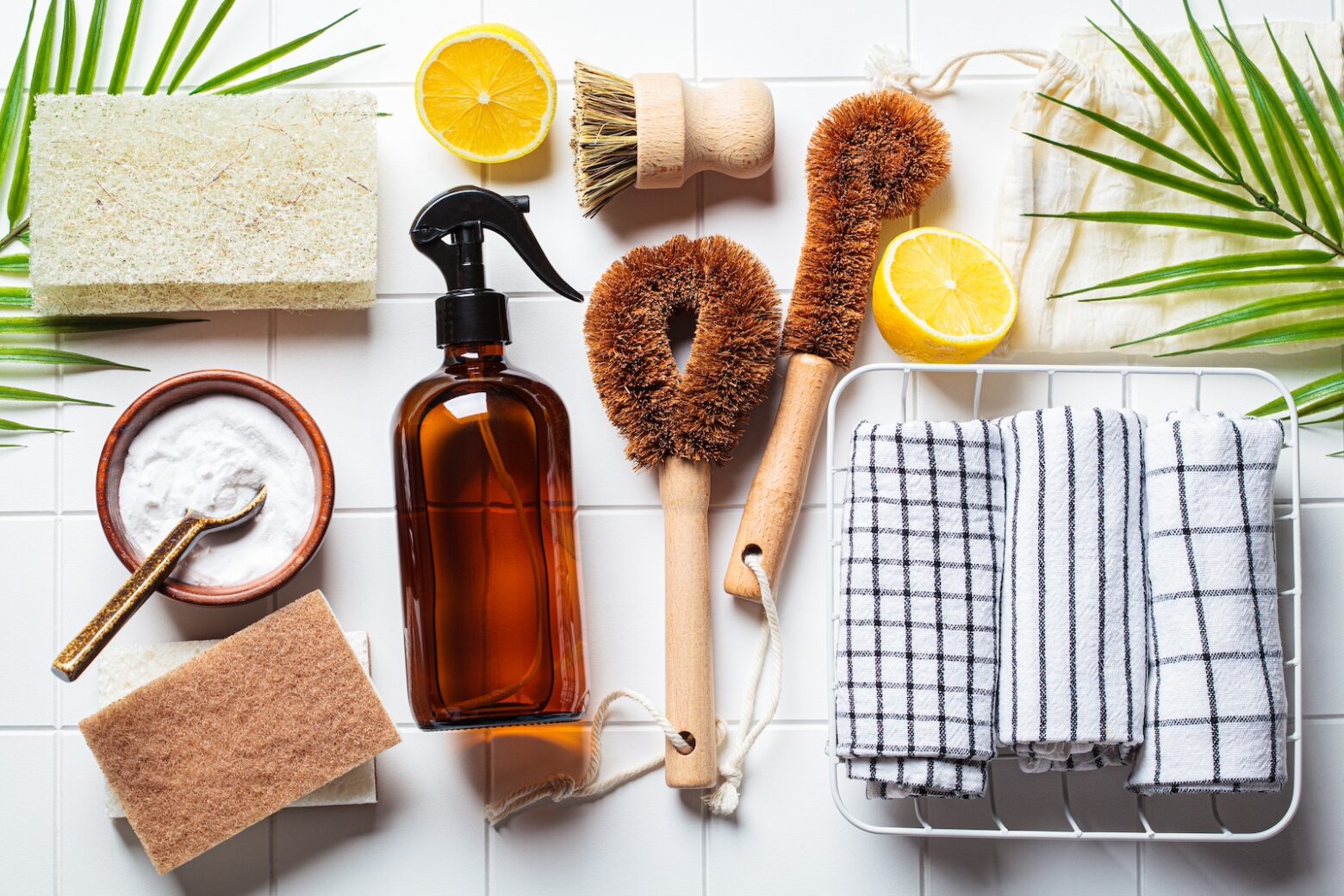
Every week, I undertake a Sunday reset. I turn on some music, gather my cleaning supplies, and set to work on restoring my home to pristine condition. No dust, dirt, or crumbs are left lingering—just gleaming countertops and spotless floors, with a hint of eucalyptus lingering in the air.
Then I began to notice something troubling after completing my Sunday resets. A headache would often settle in and my hands would feel chalky, occasionally even peeling. Initially, I brushed it off to living at altitude. But over time, I came to realize the culprit was the toxic cleaning chemicals I had been using to clean my house. So I did some research and share some healthy cleaning hacks that have worked for me.
As much as we love the results of a bleach deep clean, it’s important to understand the effects it can have on our health. Commercial cleaning supplies, including aerosol sprays, chlorine bleach, dish detergent, dry cleaning chemicals, rug cleaners, furniture polish, and oven cleaners, typically contain harmful substances such as volatile organic compounds (VOCs), which can be damaging to our lungs. [1]
The products we use daily can have a profound impact on our well-being. It’s not just about avoiding diet soda, Red Dye 40, or cigarettes—everyday household items like Windex can also pose risks to our health. It’s time to be mindful of the cleaning products we incorporate into our daily routines.
Following a healthy lifestyle extends beyond diet; it can also be applied to other aspects of life, including cleaning.
Let’s explore a few healthy cleaning hacks that can be used as the first step in the deep cleaning process or for lighter, daily cleaning. It’s important to note the ingredients used are effective at reducing bacteria and some viruses around the home, but if you need to protect against tougher pathogens like SARS-CoV-2, an EPA-approved sanitizer or disinfectant is necessary to get the job done.
Multi-Purpose Cleaning Spray
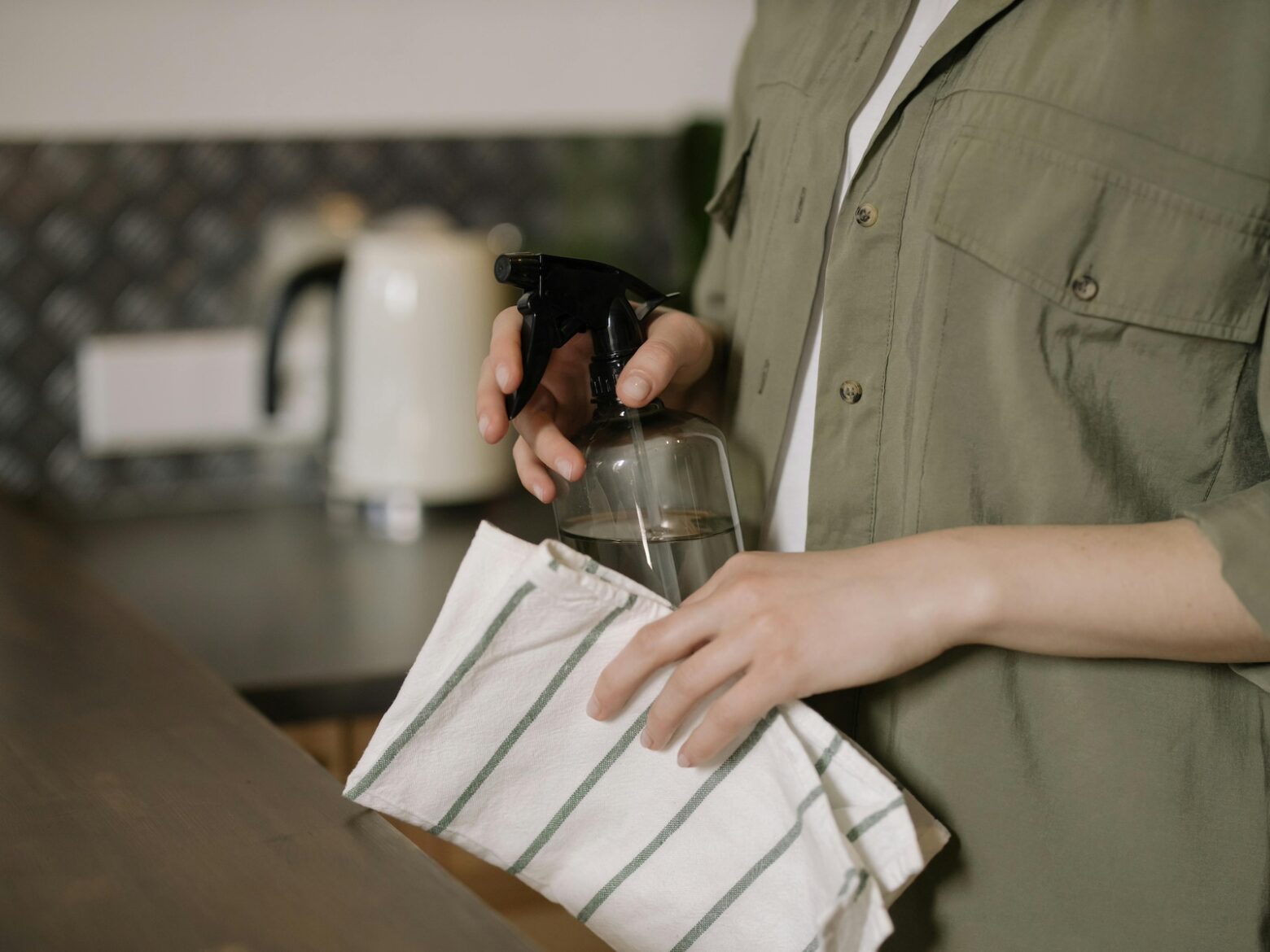
Hydrogen peroxide is a powerful cleaning compound, offering effective disinfection without the harmful effects of stronger household cleaners. To maintain safety, only use 3% or lower concentration. [2] Hydrogen peroxide is renowned for its ability to combat a wide range of microorganisms, including bacteria, yeasts, fungi, viruses, and spores. The addition of an essential oil to the solution serves to enhance its cleaning properties while providing a soothing scent to the disinfectant. This solution works great on most surfaces, I just don’t recommend using it on wood.
Ingredients:
24 oz. reusable glass spray bottle
½ cup hydrogen peroxide (3% concentration or less)
2 ½ cups warm water
15 drops of your favorite essential oil
Cleaning rag
Directions:
- Pour hydrogen peroxide, warm water, and your chosen essential oil into the reusable spray bottle.
- Secure the lid and shake the bottle to mix the ingredients thoroughly.
- Spray solution onto the surface you wish to clean.
- Using a cleaning rag, wipe away the sprayed solution, leaving the surface clean and refreshed.
Carpet Stain Remover
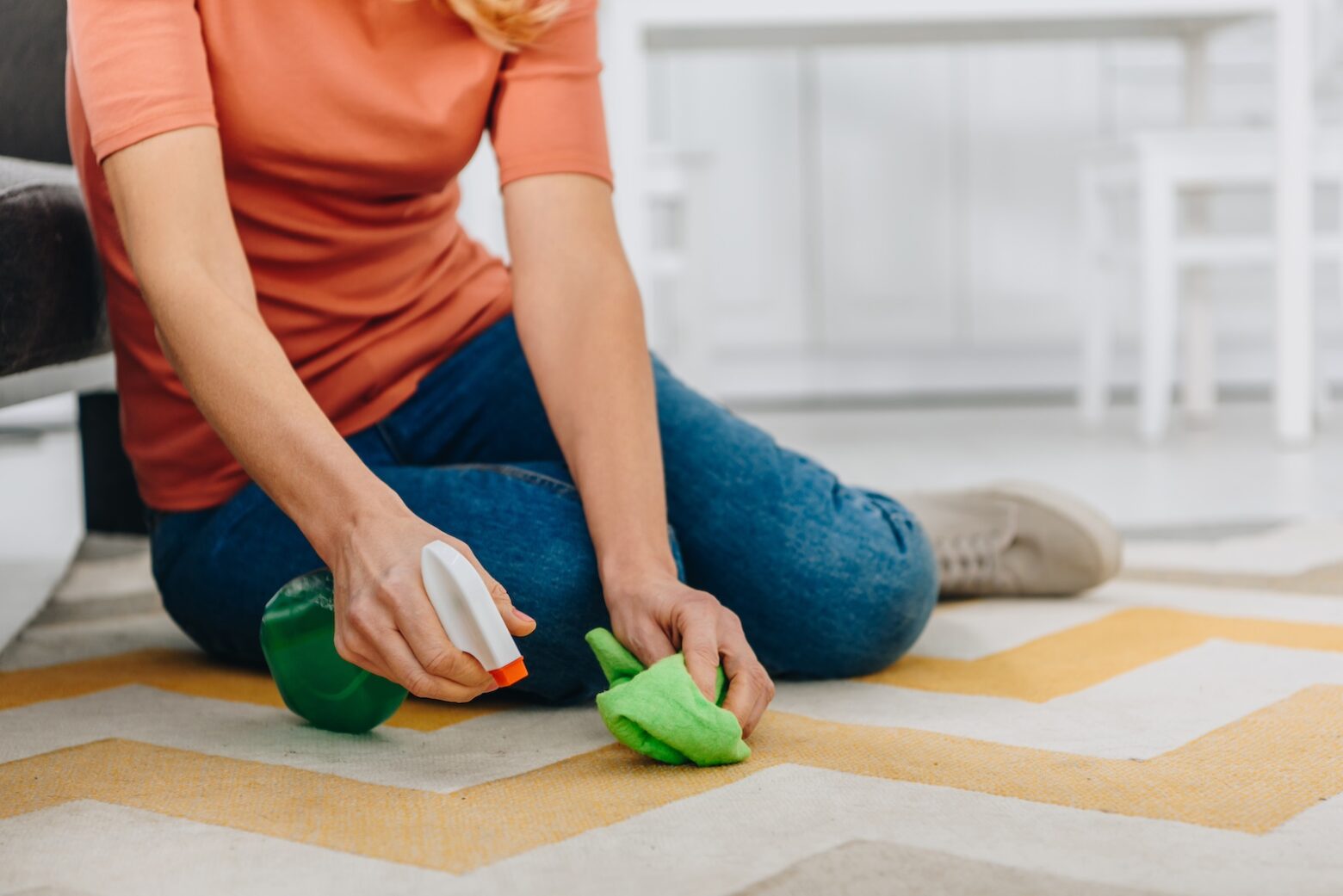
Not only is using baking soda and vinegar healthier for you, but it’s also remarkably effective at cleaning. In many cases, this simple combination works even better than commercial cleaning products. It’s not merely a science experiment you might remember from third grade, where you made a volcano erupt. The chemical reaction between baking soda and vinegar is potent enough to lift stains effectively, yet it’s not as dangerous to your health as concentrated cleaners.
Ingredients:
8 oz. reusable glass spray bottle
1 cup distilled white vinegar
8 oz. pure baking soda
1 cup warm water
2 cleaning rags
Directions:
- Prep your spray bottle by pouring vinegar into it.
- Apply a thin layer of baking soda to cover the stained area.
- Spray the covered area with white vinegar. Allow the bubbling to subside, then spray another layer.
- Dampen one cleaning rag with warm water and use it to rub the stained area gently.
- Repeat steps 2 and 3 twice for thorough cleaning.
- Carefully pour the remaining warm water over the spot and use the second cleaning rag to soak up the leftover solution.
- Allow the spot to dry completely and repeat the process if the stain persists.
Cutting Board Cleaner
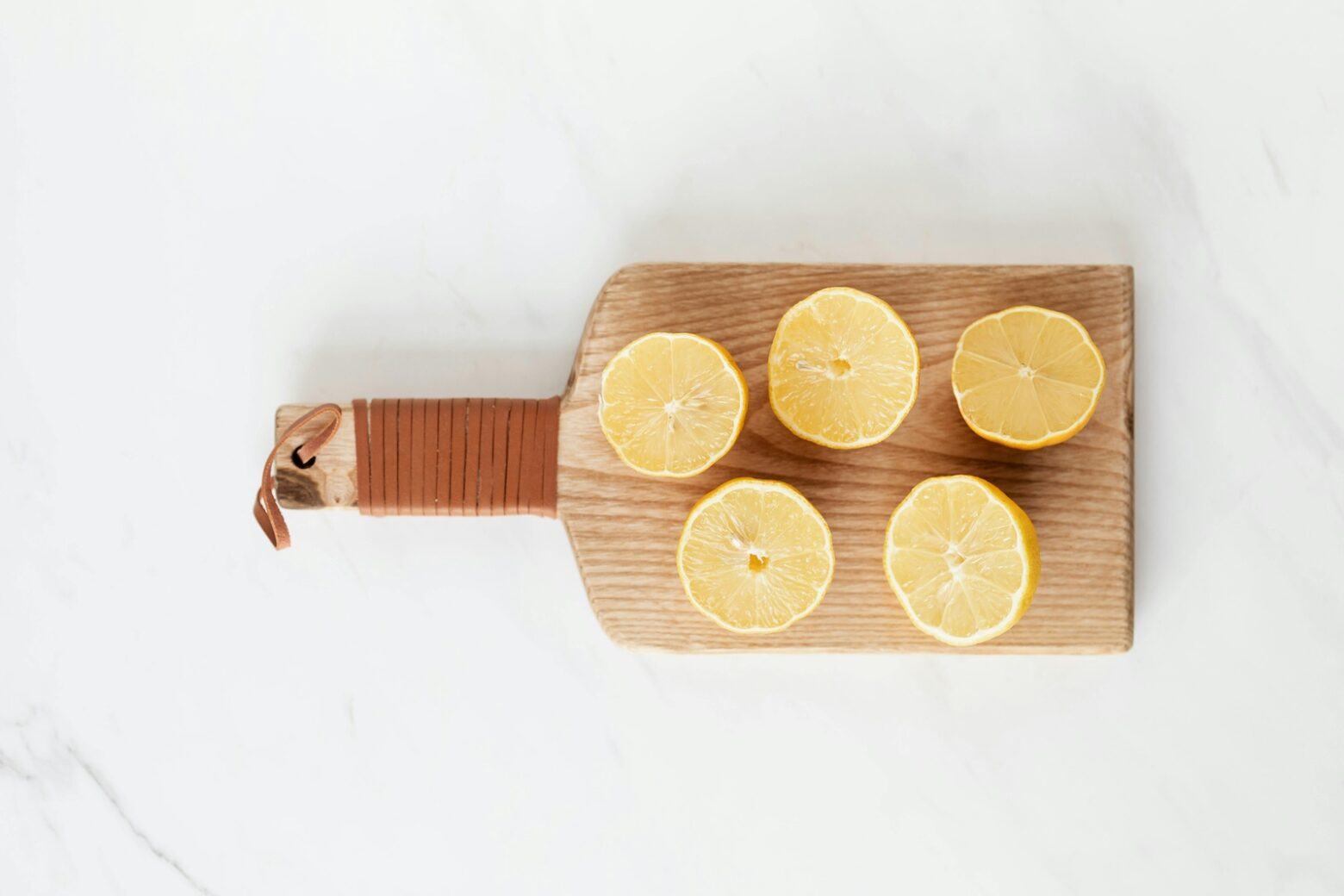
I don’t know about you, but I typically waste half a lemon each week. My recipes usually call for a small amount of lemon juice, so I always save the other half, hoping to use it in the next day or two before it goes bad. But that never seems to be the case. Now, we can put that old half lemon to use! This recipe is made for wooden cutting boards, but I’ve also used it with plastic ones and find it cleans just as well.
Ingredients:
½ cup baking soda
½ lemon
Directions:
- Place your dirty cutting board on a flat surface.
- Sprinkle baking soda across the surface of the cutting board, focusing on areas with stains or marks.
- Take half of your lemon and squeeze the juice directly onto the baking soda.
- Use the cut side of the lemon to rub the paste solution into the cutting board, acting like a sponge. Scrub harder on the problem areas.
- Rinse cutting board and leave to dry.
Drain Cleaner
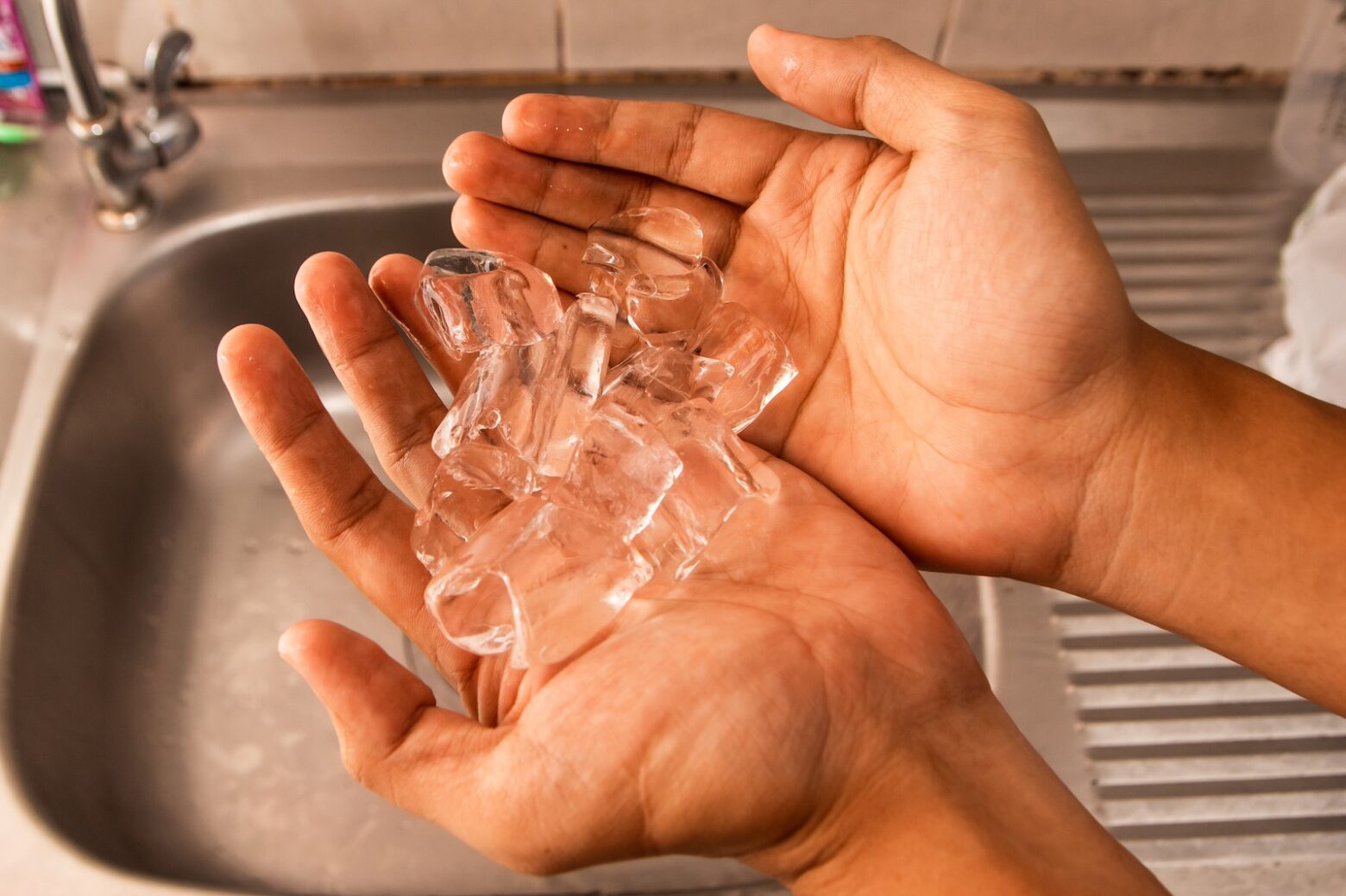
Got clogged pipes? This natural hack will unclog your kitchen sink, bathroom sink, or a clogged shower drain without the need for harsh chemicals like Drano. This easy-to-make recipe can be used weekly or even daily. Whenever you’re heating up water for tea or something else, simply add a little extra to use for this simple procedure.
Ingredients:
1 ½ cups baking soda, divided
2 ½ cups distilled white vinegar, divided
2 cups ice
8 cups water
Directions:
- Begin by boiling 8 cups water on the stove or in an electric tea kettle.
- Pour 1 cup baking soda down the drain, followed by 2 cups vinegar.
- Once water has reached a simmer, place ice cubes at the base of the drain. Sprinkle the remaining baking soda onto the ice and follow with the remaining vinegar.
- Immediately pour simmering water down the drain.
Garbage Disposal Freshener
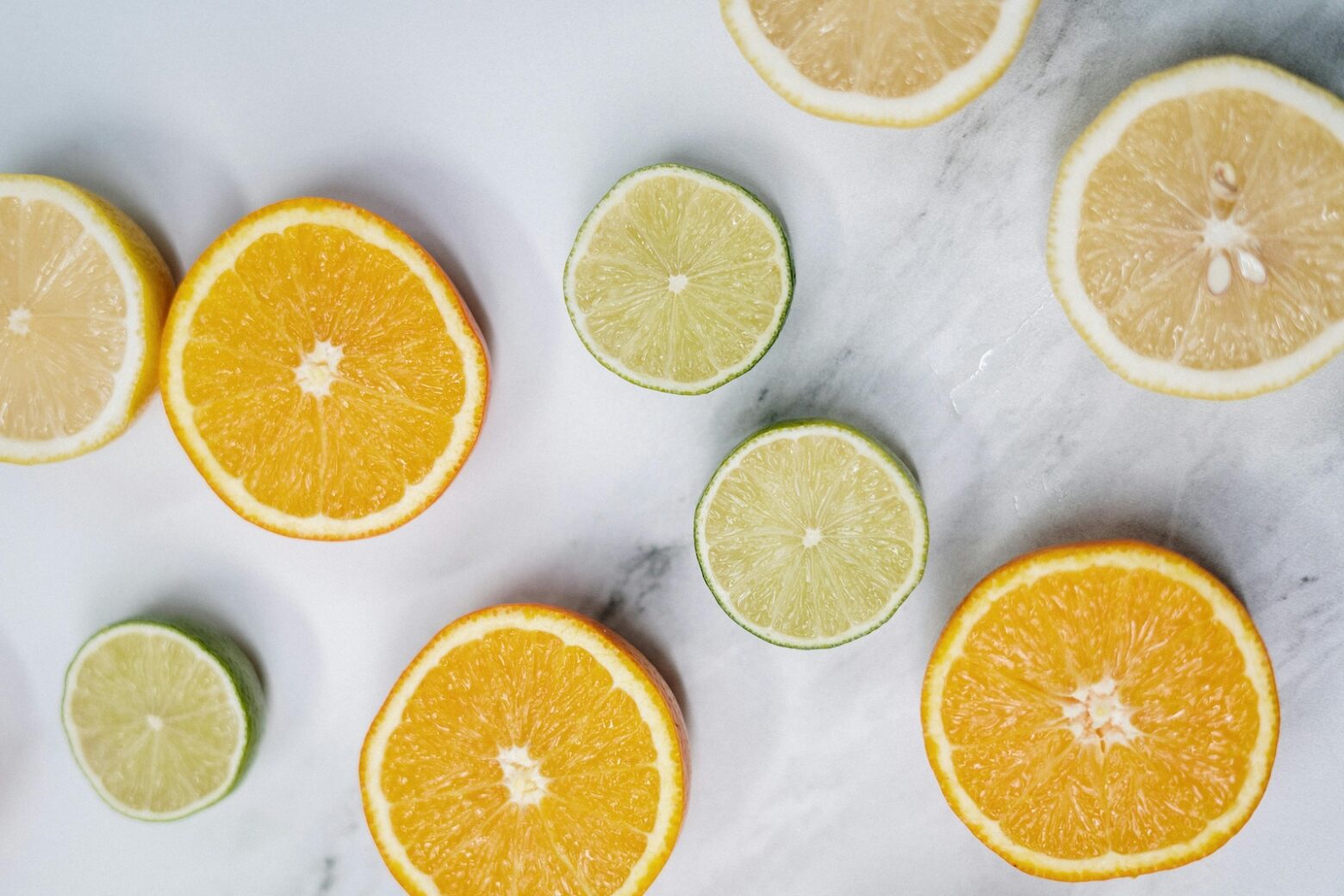
You can use leftover oranges, lemons, or limes that are on the verge of going bad to create a pleasantly scented kitchen sink. It’s a brilliant way to reduce waste while simultaneously freshening up your space—and an excellent opportunity to clean out your refrigerator in the process.
Ingredients:
Leftover orange, lemon, or lime
Directions:
- Slice up your choice of citrus into small pieces.
- Place the fruit slices down your kitchen sink drain, ensuring they are positioned near the garbage disposal.
- Turn on the sink and let the water stream directly into the drain.
- Once the water is warm, switch on the disposal until the citrus is crushed and expelled down the drain.
More Healthy Cleaning Hacks
There are countless other tips for creating non-toxic cleaning supplies using pure ingredients. Simple switches like swapping out bleach for baking soda and vinegar can not only save you money but also help protect your body from exposure to toxic chemicals. Give one of these gentle alternatives a try, and you’ll be pleasantly surprised by how clean and refreshed your home feels.
References
[1] Association AL. Cleaning Supplies and Household Chemicals [Internet]. www.lung.org. 2023. Available from: https://www.lung.org/clean-air/indoor-air/indoor-air-pollutants/cleaning-supplies-household-chem
[2] Nelson AL, Porter L. Hydrogen Peroxide Toxicity [Internet]. PubMed. Treasure Island (FL): StatPearls Publishing; 2022. Available from: https://www.ncbi.nlm.nih.gov/books/NBK585102/#:~:text=Hydrogen%20peroxide%20is%20an%20oxidizing
[3] CDC. “Chemical Disinfectants.” Centers for Disease Control and Prevention, 18 Sept. 2016, www.cdc.gov/infectioncontrol/guidelines/disinfection/disinfection-methods/chemical.html.
Isabella Mead
Isabella Mead is the Assistant Project Manager at The Paleo Diet and has experience in creating digital content for lifestyle and nutrition brands.
More About The Author



